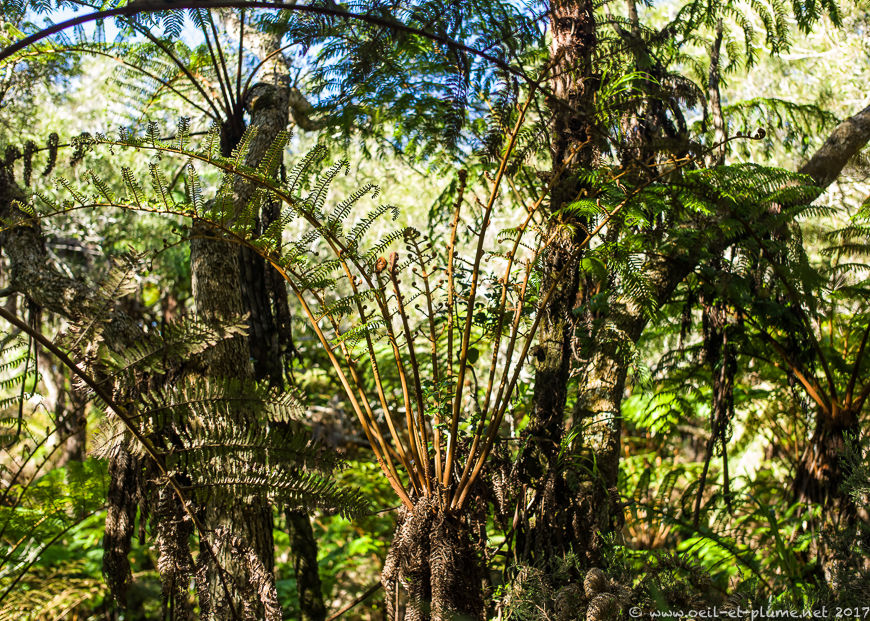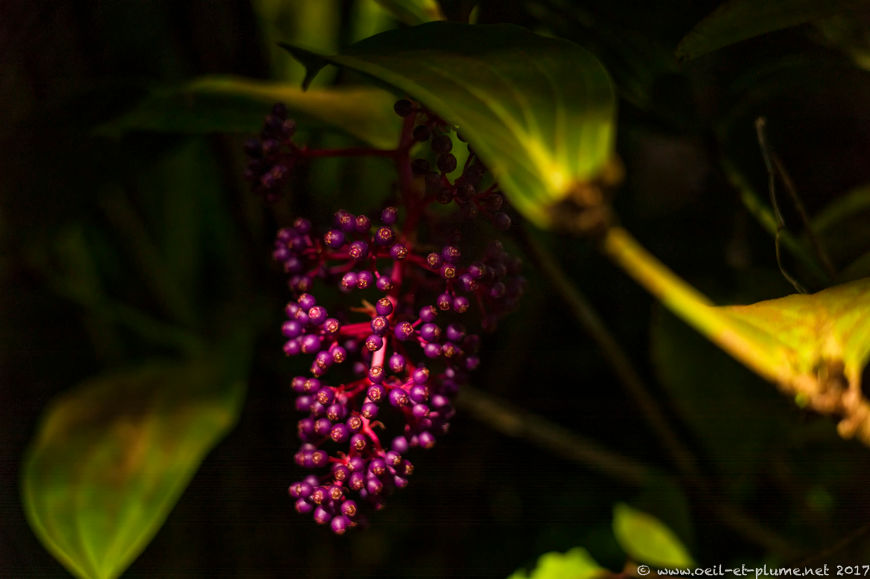My first post on Reunion Island presented general landscape and sociocultural matters. It included a substantial body of text to frame and orient your reading of the photographs. In turn, this post remains light on words in order to better stimulate your visual and emotional imagination. Moreover, the post focuses on Reunion’s tropical, lush and colourful vegetation.
Tamarind
To start with, I wish to pay tribute to a 300-year-old tamarind tree, found in Bébour-Bélouve Forest near Hell-Bourg.

The venerable tree went through all sorts of climatic and human-made challenges. It fell down during a cyclonic storm a couple of years ago. Even laying down on the ground, the tamarind tree is still alive. A beautiful example of vegetal resilience.
Bébour-Bélouve Forest consists in a dense mixture of tamarind trees, fern trees and moos. Seated at above 1,000 meter above sea-level, it is often bathed in rain and capped with fog and clouds. Even in a sunny day, the forest displays awesome and fantastic sceneries and atmospheres.




Vegetal versus Human
Tropical ecosystems provide mankind with generous amounts of vegetal resource. However, people struggle to live and prosper in such environment unless they can deploy heavy labour and machines. Nature is everywhere, hyperactive, heavy and overwhelming. Greenery in Reunion is astonishingly luxuriant, light- and space-greedy.



Yet, wild plants and man-made vegetal creations are not always easily distinguishable. Who — Nature or mankind — inspires, and who leads the growth process can remain opaque.


Vegetal Rainbow
The following compiles some of the many vegetal treasures of Reunion Island in an explosion of tropical colours and an enchantment for the eye. Botanical details of the flowers and plants displayed are voluntarily omitted. This is how I visit interesting places: my first glimpse or visit is exclusively visual. Background documentation of the visual material can be easily gathered eventually. Enjoy the visual journey!








Cheers,